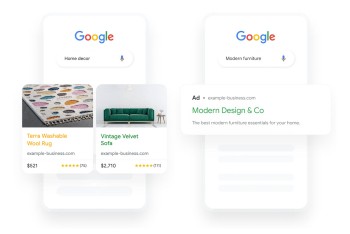The Google Ads bounce rate is a critical indicator of how well your ads and landing pages are performing together. A high bounce rate can signal inefficiencies in your campaign, while a low bounce rate can indicate that users are finding your content relevant and engaging.
Monitoring and optimising your Google Ads bounce rate can lead to improved campaign performance, better ROI, and a higher Quality Score.
What is Google Ads Bounce Rate?
Definition and Importance
Bounce rate in Google Ads refers to the percentage of visitors who click on your ad and then leave the landing page without taking any further action. It’s an important metric because it directly impacts the effectiveness of your campaigns. A high bounce rate typically indicates that something is amiss—whether it's the relevance of your ad, the quality of your landing page, or the alignment between user intent and your content. Understanding and managing bounce rate is crucial because it influences your overall Google Ads performance, affecting both your Quality Score and your return on investment (ROI).
Measuring and Analysing Bounce Rate in Google Ads
Using Google Analytics with Google Ads
To effectively measure and analyse your Google Ads bounce rate, integrate Google Analytics with your Google Ads account(external link). This integration allows you to track user behaviour on your landing pages, providing valuable insights into how visitors interact with your site after clicking on your ads. By monitoring these metrics, you can identify areas for improvement and make data-driven decisions to optimise your campaigns.
Key Metrics to Watch
When analysing your Google Ads bounce rate, pay attention to key metrics such as average session duration, pages per session, and conversion rates. These metrics provide a deeper understanding of user engagement and can help you identify patterns that lead to high bounce rates. Use this data to refine your targeting, ad copy, and landing page design to create a more effective and engaging user experience.
Factors Contributing to High Bounce Rate in Google Ads
Irrelevant Ad Targeting
One of the primary factors contributing to a high bounce rate in Google Ads is irrelevant ad targeting. When your ads are shown to the wrong audience, the chances of those users engaging with your landing page diminish. Poorly targeted ads result in users clicking on your ad, realising it doesn’t meet their needs or expectations, and immediately leaving your site. This mismatch not only increases your bounce rate but also wastes your advertising budget.
Misleading Ad Copy
Misleading ad copy can also drive up your Google Ads bounce rate. If the content of your ad doesn’t accurately reflect what users will find on the landing page, visitors are likely to leave quickly. This happens when the promises made in the ad aren’t fulfilled, leading to user frustration and an increased likelihood of a bounce. Ensuring that your ad copy aligns closely with the landing page content is essential to keep users engaged.
Poor Landing Page Experience
A slow, unresponsive, or poorly designed landing page can significantly increase your bounce rate. Users expect a seamless experience from the moment they click on your ad to the point where they interact with your landing page. If the landing page takes too long to load, is difficult to navigate, or doesn’t immediately convey value, users are likely to leave. Optimising the design and functionality of your landing page is key to reducing bounce rates and keeping visitors engaged.
Lack of Mobile Optimisation
With a significant portion of web traffic now coming from mobile devices, it’s crucial that your landing pages are fully optimised for mobile users. If your landing page isn’t mobile-friendly, you risk alienating a large segment of your audience, leading to higher bounce rates. A lack of mobile optimisation can cause usability issues, such as hard-to-read text, unclickable buttons, and slow load times, all of which contribute to a poor user experience and increased bounce rates.
User Intent and Ad Mismatch
When there’s a disconnect between what the user intends to find and what your ad/landing page delivers, a high bounce rate is inevitable. This mismatch often occurs when the keywords you’re targeting don’t align with the actual content on your landing page. To reduce bounce rates, it’s vital to ensure that your ads are accurately targeting the right user intent and that the landing page content delivers on the expectations set by the ad.
How to Reduce Bounce Rate in Google Ads Campaigns
Optimising Ad Targeting
To reduce your Google Ads bounce rate, start by refining your ad targeting. Make sure that your ads are being shown to the right audience by using precise targeting options such as demographics, location, and interests. Narrowing your focus to the most relevant audience will increase the likelihood that visitors who click on your ads will find your content useful and engaging, thereby reducing the bounce rate.
Crafting Effective Ad Copy
Your ad copy should be clear, concise, and directly aligned with the content on your landing page. Avoid making exaggerated claims in your ads that aren’t backed up by the landing page. Instead, focus on writing ad copy that accurately reflects what users can expect when they click through. This alignment will help to set the right expectations and reduce the likelihood of users bouncing.
Improving Landing Page Experience
Enhancing the landing page experience is another critical step in reducing bounce rates. Ensure that your landing page loads quickly, is easy to navigate, and immediately presents the value proposition. Use clear headlines, compelling visuals, and concise content to keep users engaged. Additionally, remove any unnecessary distractions that might cause users to leave the page prematurely.
Ensuring Mobile Optimisation
Given the prevalence of mobile browsing, it’s essential that your landing pages are fully optimised for mobile devices. Use responsive design techniques to ensure that your content looks great and functions well on screens of all sizes. Make sure that buttons are easy to click, text is legible, and the overall layout is intuitive for mobile users. This will help to reduce bounce rates and improve user engagement across all devices.
Aligning User Intent with Ads
To further reduce bounce rates, ensure that your ads are closely aligned with user intent. Use relevant keywords that accurately match the content on your landing page. By focusing on what users are actually searching for, you can create ads that resonate with their needs and expectations. This alignment will help to keep users on your site longer, reducing the likelihood of a bounce.
The Relationship Between Bounce Rate and Quality Score
Impact on Quality Score
Bounce rate plays a significant role in determining your Google Ads Quality Score(external link). A high bounce rate signals to Google that your landing page may not be providing a good user experience, which can negatively impact your Quality Score. A lower Quality Score can lead to higher costs per click (CPC) and reduced ad placements. Therefore, managing your bounce rate effectively is crucial to maintaining a healthy Quality Score and optimising your ad spend.
Improving Quality Score by Reducing Bounce Rate
By reducing your bounce rate, you can improve your Quality Score. Start by analysing the factors contributing to high bounce rates, such as ad relevance and landing page experience, and take corrective actions. As your bounce rate decreases, your Quality Score is likely to improve, resulting in better ad placements, lower CPCs, and a more efficient use of your advertising budget.
Conclusion
Managing your Google Ads bounce rate is a great way to maximise the effectiveness of your campaigns. By understanding the factors that contribute to high bounce rates and implementing strategies to address them, you can improve user engagement, enhance your Quality Score, and achieve better overall results from your advertising efforts.
Regularly monitor your Google Ads bounce rate and make continuous improvements to your campaigns. By focusing on creating relevant ads, delivering a seamless landing page experience, and aligning with user intent, you can reduce bounce rates, improve your Quality Score, and maximise your return on investment.




